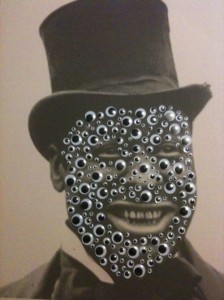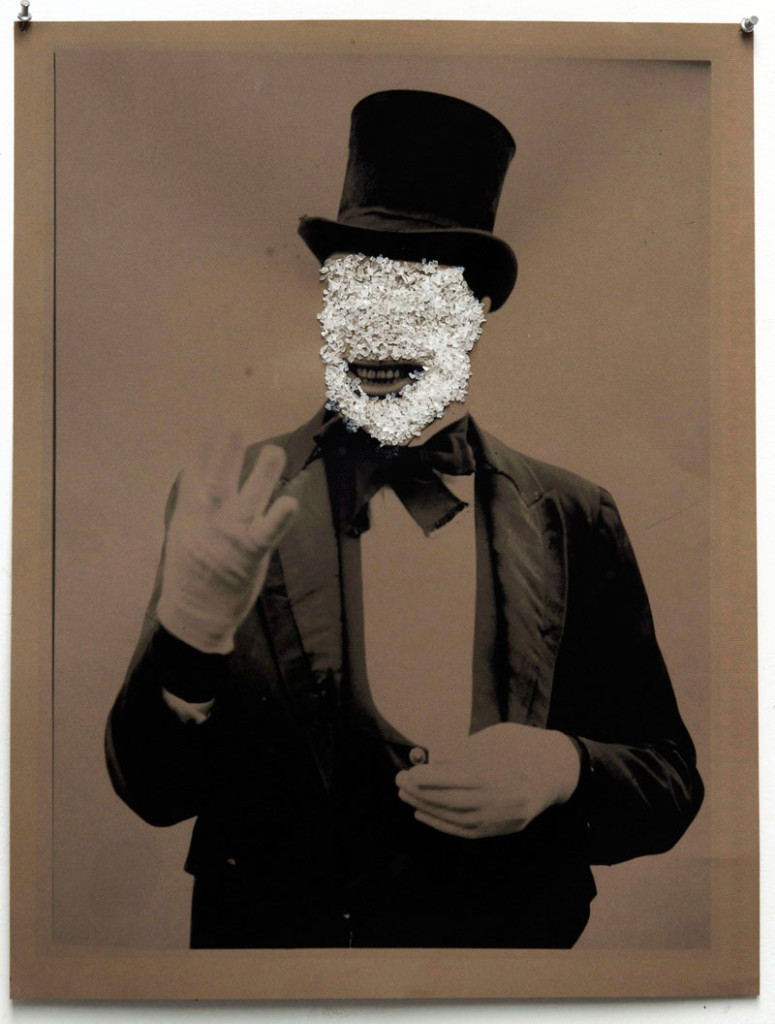
Work of Felandus Thames can be seen in the Dolly M.E. Robinson Liberal Arts Gallery of the Jackson State University. Till November 6.
All eyes on me, 2010.
About Felandus Thames
 Salome, 2009.
Salome, 2009.
A native of Mississippi, Felandus Thames (1974) is a graduate of the Yale University’s MFA program in Painting/Printmaking and has earned a BA from Jackson State University. In addition to three solo shows, Thames has been included in numerous group exhibitions on the national level including Heather James Gallery (Palm Dessert, CA), Tilton Gallery (NYC), Adaum Baumgold Gallery (NYC), Kravetz Wehby Gallery (NYC), Lemieux Gallery (New Orleans, LA), Yale University (New Haven, CT), Mississippi Museum of Art, National Civil Rights Museum (Memphis, TN), Aspen Museum of Art ( Aspen, CO) and Walker’s Point Center for the Art (Milwaukee, WI). He has been recognized as an actively contributing member of the artistic community in Mississippi and received numerous commissions including the City of Jackson, University of Mississippi Medical Center, Jackson Medical Mall Foundation, and Medgar Evers Institute. Thames was awarded Travel Grants, Mini Grants, and Individual Artist Fellowships from the Mississippi Arts Commission and The Greater Jackson Arts Council. As an instructor, Thames has vigorously proceeded with his efforts in the forward thrust of art and his undying mission to cultivate the studio practice of young artists.

The work: Felandus Thames’ art will unsettle many viewers. There looms in his use of bodies and body parts –the shards of conflicted histories– an estranging dialectical play between absence and excess. This play resists triumphalism. It embraces mediation. And, it refuses to provide closure for historical yet ongoing social tensions. By besetting us with hyper real corporeal fragments, an aesthetic modality which transcends didacticism, Thames’ work overwhelms the process of viewing. We cannot engage his works passively. We cannot view or consume his works without also being consumed by them. His works decompose us. They alter us. And in the process of undergoing our own forms of psychic fragmentation, the unease experienced as we interface with the density of abjection in Thames’ works ruptures the boundaries which subtend our sense of viewership. Thames’ use of the grotesque’s aesthetics thus operates as an ethical gesture: at once a critique of spectatorship, a deep reflection on humanism, and a thoughtful meta-commentary on the relationship between and among modern image culture, the body, and histories of objectification. His use of the grotesque also inscribes his current concerns within a larger body of modern art whose ideas about aesthetics, politics, and meaning troubled and continue to upset normative beliefs about art.


